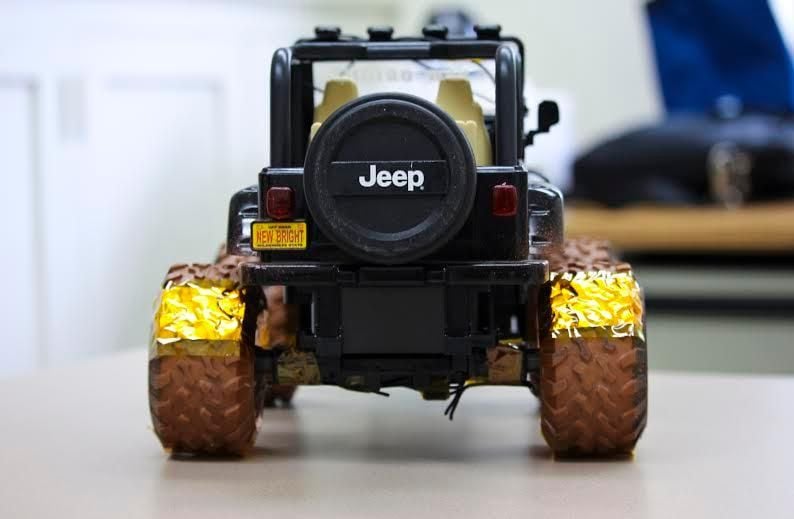This New Nanogenerator Could Make Cars Much More Efficient
Electrodes placed on a car’s tires can harness the energy generated when rubber meets road
/https://tf-cmsv2-smithsonianmag-media.s3.amazonaws.com/filer/bd/96/bd963537-f3f9-4c47-b483-e43e4bcfa69c/wang2.jpg)
As the Jeep rolled along, its LED lights began to flash on and off. But instead of the toy's battery powering the lights, as one might expect, a nanogenerator on the Jeep's tires harvested friction energy to fuel them.
Developed by engineers at the University of Wisconsin at Madison and Zhengzhou University in China, this nanogenerator could eventually make real cars more efficient. By placing electrodes on the tires, the scientists have figured out how to capture the energy from the changing electric potential between the tires and the road. This type of energy is normally wasted, but nanogenerators make it possible to harvest it and redirect it towards the car's battery, they recently reported in the journal Nano Energy.
“I’m pretty excited about this,” says project leader Xudong Wang, an associate professor of materials science and engineering at the university.
The nanogenerator works on a principle called the triboelectric effect, Wang explains. The triboelectric effect is the charge that comes from rubbing together certain types of materials. The static shock you get after rubbing your feet on carpet is an example, and so is the charge that rubber car tires and asphalt roads generate when they come into contact.
Wang’s team has been experimenting with nanogenerators—electrodes that convert mechanical energy into electricity—for several years. The researchers are placing the inch-long electrode patches on the surface of the car’s tires to harness the energy and direct it back towards the car’s battery. Wang would ultimately like to see the technology enhance the efficiency of electric cars.
“We can probably improve the mileage by 10 percent,” says Wang. “I think all electric cars will want this.”
The project will need to be developed further before car companies can buy in. Car tires will need to be significantly redesigned to incorporate the nanogenerators. With the toy Jeep, electrode patches were merely placed on the tires' surface. But in a real car, this placement would mean the electrodes would be worn away almost immediately. Wang envisions a tire design that integrates the electrodes directly into the treads. But this is a major design overhaul that will take serious time and money. Wang plans to work with engineers to figure out the best tire design.
“I want to engineer the configuration and see what’s the maximum efficiency we can reach,” Wang says.

Wang thinks the nanogenerators will be ready for real world use sometime in the next ten years. The exact timing will depend on how difficult it is to engineer different tires, and on which kinds of vehicles manufacturers are most interested in applying the technology.
There are many different applications for triboelectric nanogenerators [TENGs], Wang says. Most nanogenerator research is done in Europe or Asia, where researchers are looking at TENGs in a variety of mediums. A team at the Georgia Institute of Technology and two Chinese universities has developed a rollable, paper-based nanogenerator to harvest sound wave energy. The nanogenerator could be placed in a cellphone to harvest energy from human voices. Another team has developed a nanogenerator that can be inserted in a shoe to harness walking energy. The invention could potentially power small electronics, or could even eventually lend its power to the grid. A newly invented transparent TENG captures the power of flowing water. It could be integrated into car or home windows to make use of rain power, the kinetic energy of falling rain.
As promising as TENGs are, there are relatively few American scientists currently pursuing this type of research, Wang says.
“Investors and the federal government need to think more about [TENGs],” Wang says. “There are many different ways to save energy.”
/https://tf-cmsv2-smithsonianmag-media.s3.amazonaws.com/accounts/headshot/matchar.png)
/https://tf-cmsv2-smithsonianmag-media.s3.amazonaws.com/accounts/headshot/matchar.png)